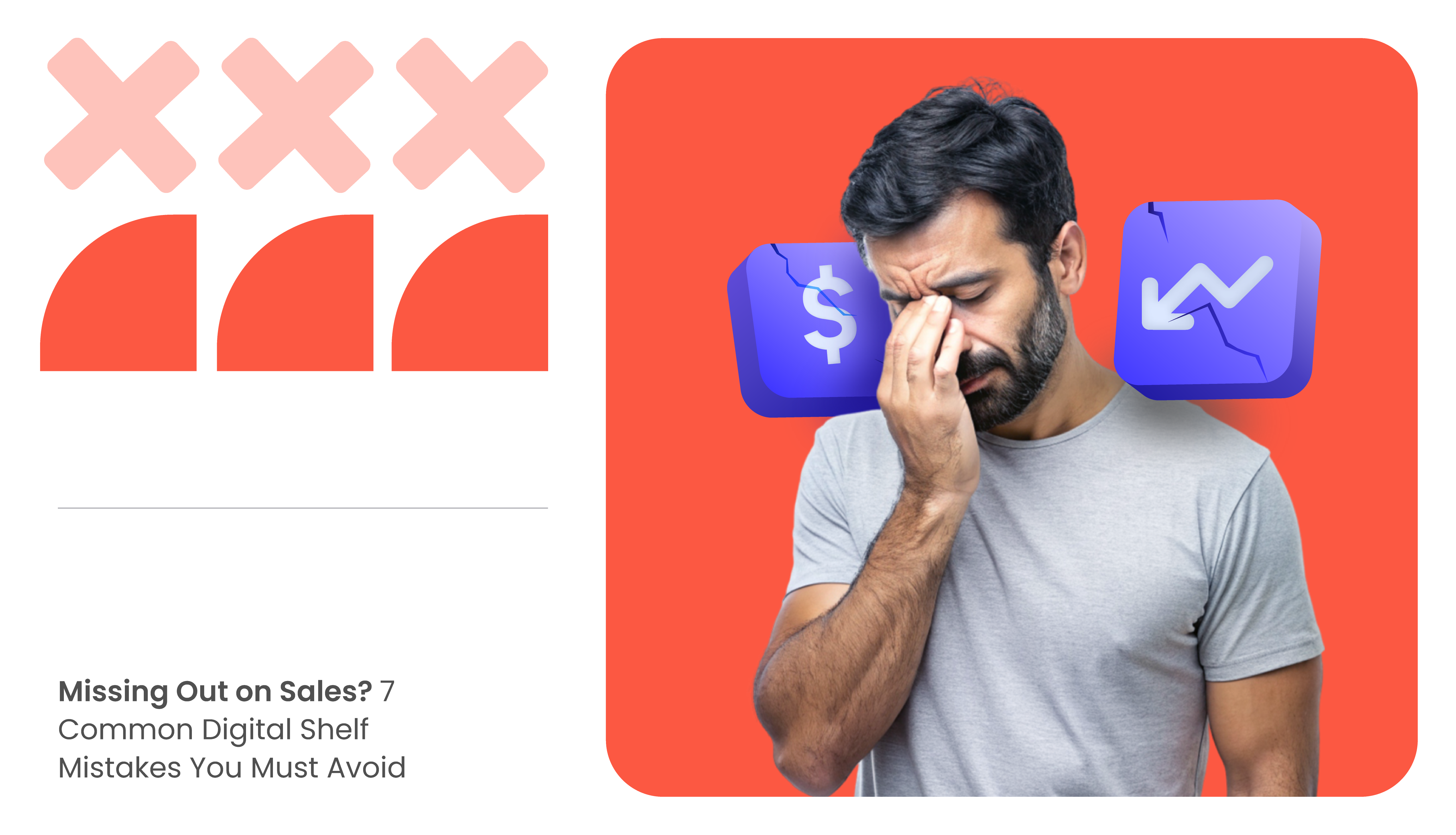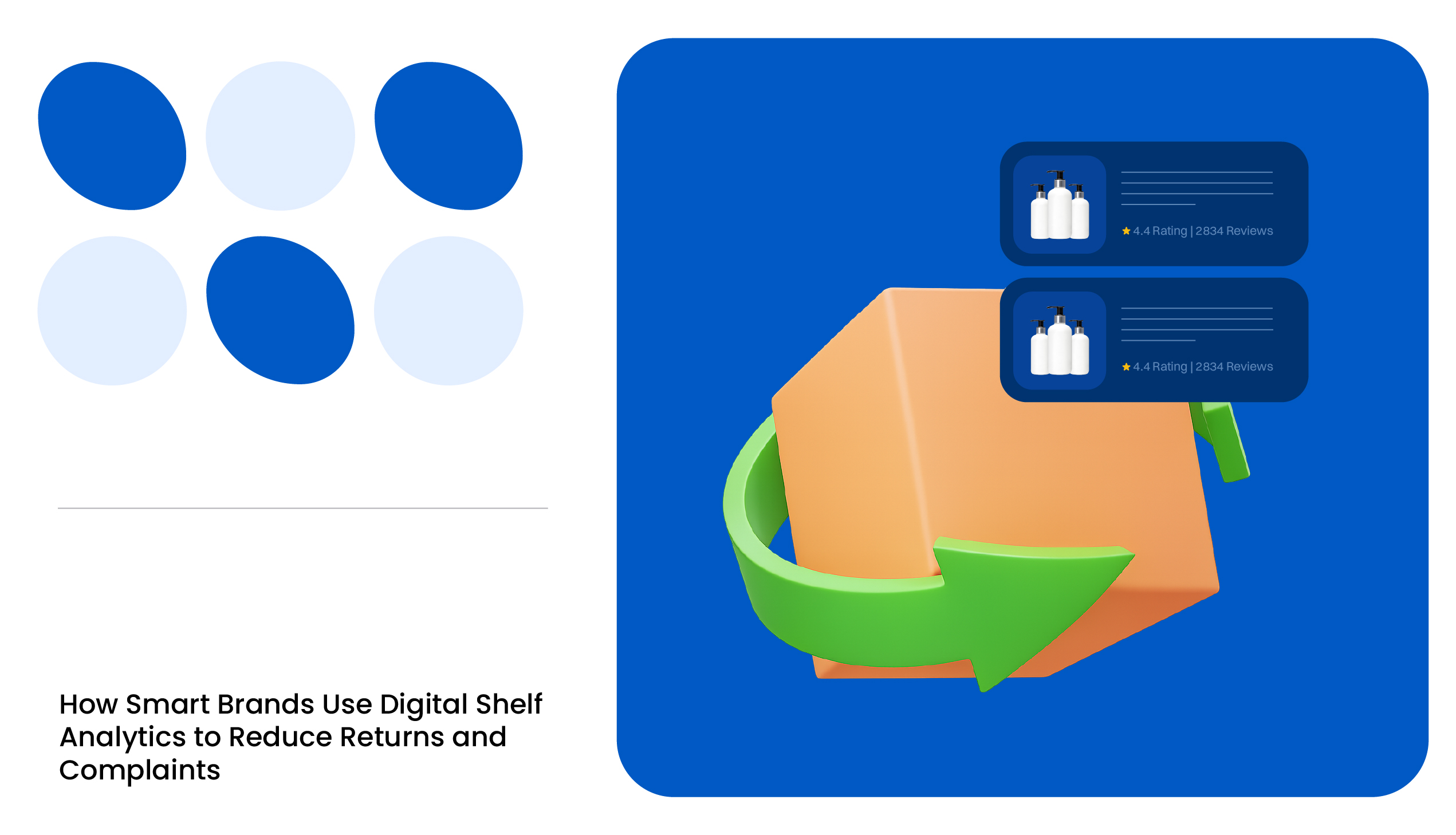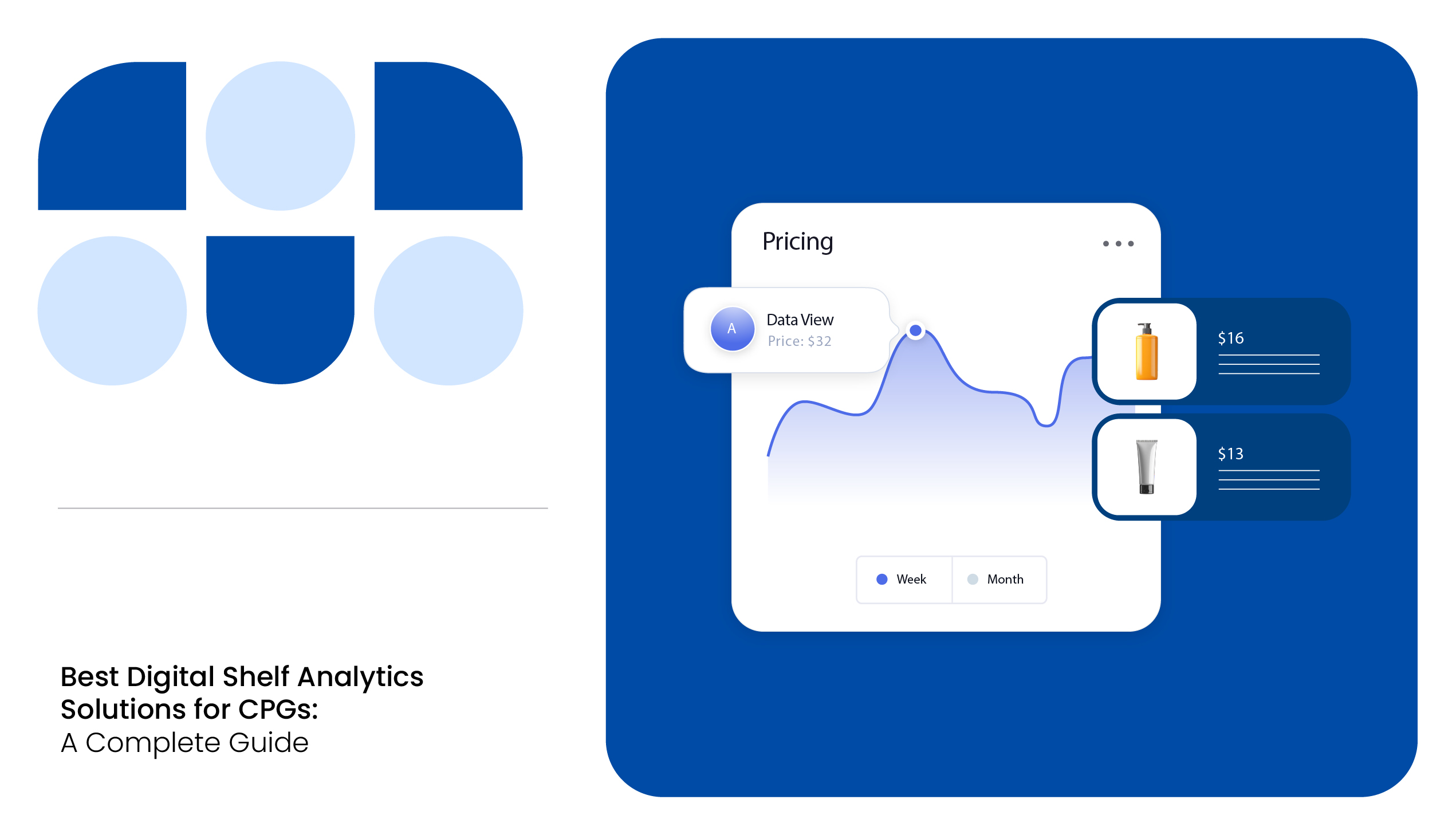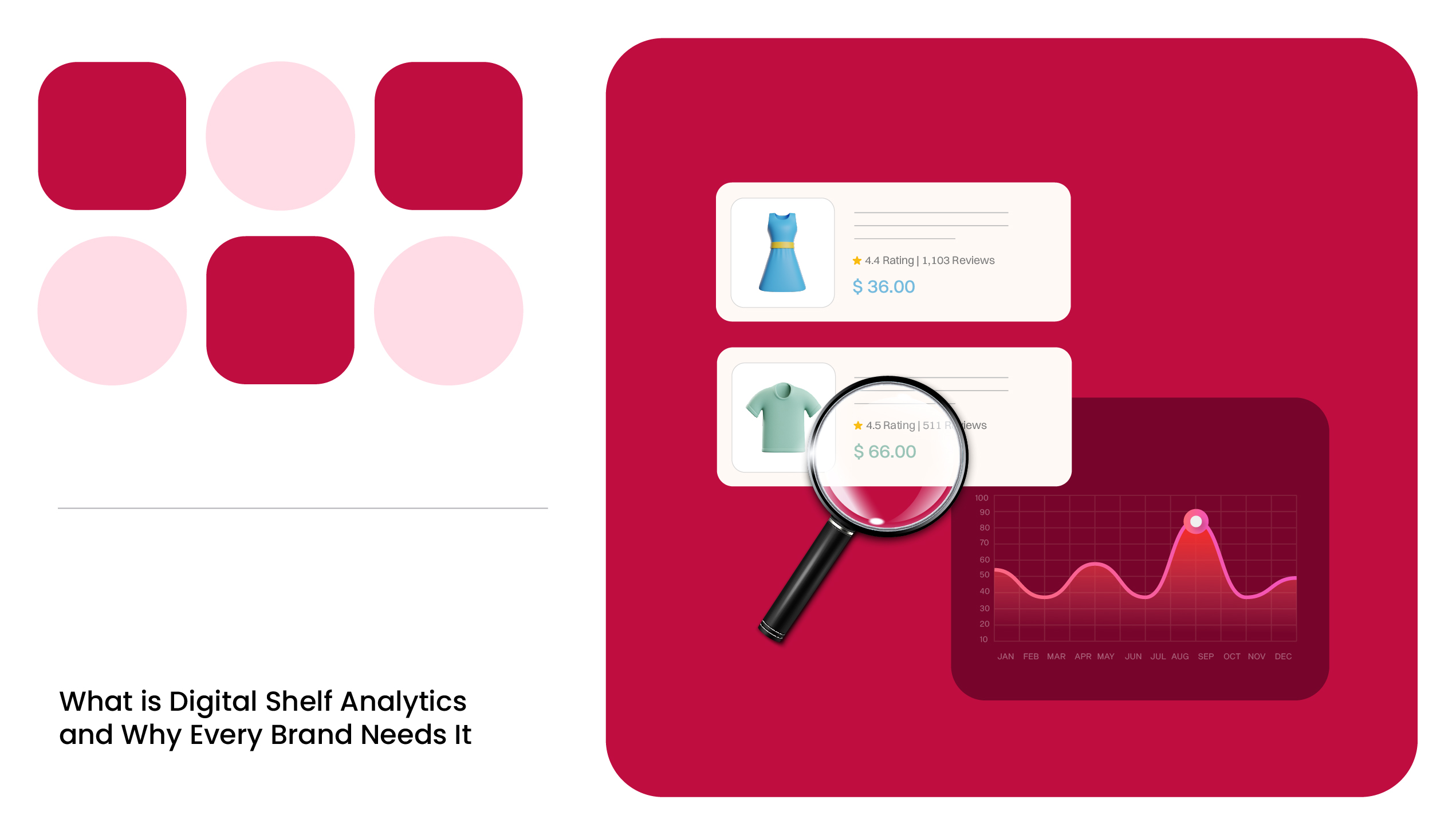Are those blurry product images costing you sales? Do you feel like your competitors are outsmarting you while you’re stuck guessing what they’re doing? Does it hit you hard when a top-selling product runs out of stock, and you know you’ve just let loyal customers slip away?
These aren’t minor issues— they’re massive problems in digital shelf management that could be killing your brand’s growth. But here’s the good news: there’s a way to fix this, and it starts with digital shelf analytics.
Tools like MetricsCart give you the power to monitor, optimize, and dominate your e-commerce presence. The brands that win aren’t just selling products—they’re mastering the digital shelf. So, are you ready to play smarter?
First, you need to understand the common pitfalls in digital shelf management that you must avoid.
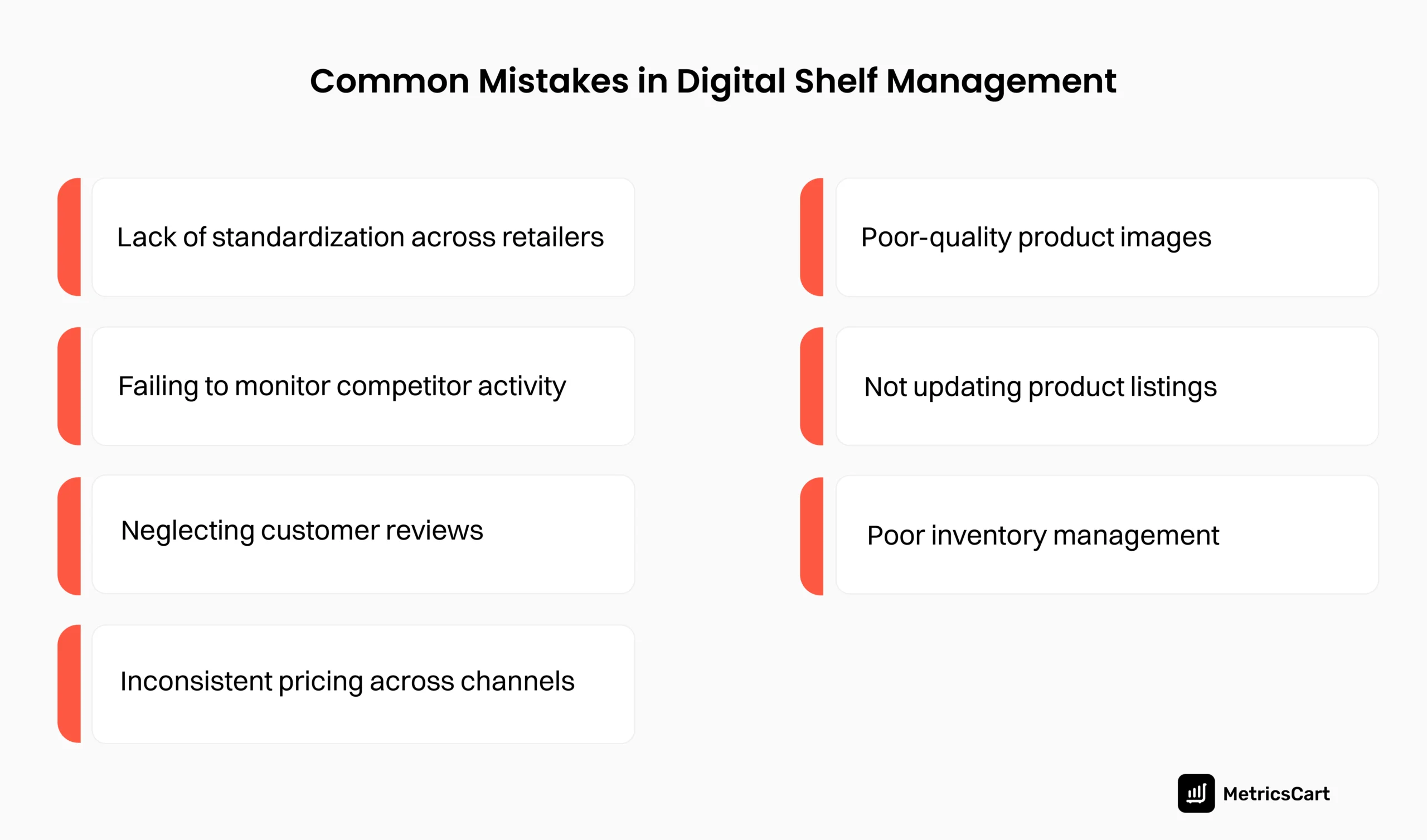
Lack of Standardization Across Retailers
One of the most significant issues in digital shelf management is the lack of standardization across different retail platforms. This includes inconsistent product information, images, branding, etc.
When product details vary between retailers, customers can question the product’s authenticity or quality, resulting in lost sales and increased return rates. In addition, a lack of a joint business plan (JBP) makes it difficult for brands to align with retailers on product listing consistency and promotional efforts, which can confuse customers, erode trust, and increase lost sales.
Therefore, brands must ensure that their product listings are uniform across all channels to provide a seamless shopping experience.
Failing to Monitor Competitor Activity
Understanding competitor pricing, promotions, and product availability is essential for brands to maintain a competitive edge. If they fail to monitor competitor activity, it can lead to missed opportunities and an inability to adapt to market changes.
For example, when a competitor launches an innovative product or packaging style that resonates with customers, brands that fail to notice might lose market share to this trend. It can also affect their search visibility and ultimately result in customer dissatisfaction.
Thus, brands must use digital shelf analytics software to gain insights into competitors’ pricing, promotions, reviews, and availability and stay updated on competitors’ strategies in real time.
Neglecting Customer Reviews
Customer reviews are social proof that validates a product’s quality and a brand’s reputation. Ignoring them can affect the brand’s credibility, as customers might perceive them as unresponsive or uninterested in customer satisfaction. This can further reduce the total number of reviews and increase negative reviews.
However, products with no reviews or only negative ones can deter potential buyers. Reviews significantly influence the consumer buying process. In addition, when customer feedback isn’t addressed, common issues with the product or service remain unresolved. This can lead to higher return rates due to unmet expectations.
Therefore, it is vital to use a review monitoring tool to analyze reviews across platforms and use the insights from reviews to refine products and improve customer experience.

Inconsistent Pricing Across Channels
Inconsistent pricing can lead to customer dissatisfaction, loss of sales, and potential legal issues related to price discrimination. For example, a customer finds a product priced at $50 on one platform and $100 on another without any promotion activity. This discrepancy raises doubts about the brand’s pricing integrity.
In addition, retailers expect brands to maintain price consistency to ensure fair competition. Inconsistent pricing can strain relationships with key retail partners, leading to reduced collaboration opportunities.
Implementing a suitable pricing strategy and regularly monitoring using a price monitoring tool across all channels can help maintain consistency and customer trust.
READ MORE | Confused About Selecting the Right Pricing Strategy? Dive into Best Pricing Strategies for E-Commerce That Help Scale Business
Poor-Quality Product Images
High-quality images are critical in digital commerce, as they serve as a customer’s first impression of a product. When brands have poor-quality product images, it can significantly impact their online sales, customer engagement, and brand reputation.
For instance, grainy, low-resolution images make customers doubt the authenticity or quality of a product, prompting them to seek better-presented alternatives. Moreover, when images do not accurately represent the product, customers feel misled, resulting in increased returns.
Thus, brand manufacturers need to follow image and video guidelines given by retailers. For example, on Amazon, main photos require a white background and a minimum resolution of 1000 x 1000 pixels. In addition, you can add lifestyle images, infographics, and comparison charts to enhance the listing by showing how the product is used and its benefits.
Not Updating Product Listings
Failing to update product details such as specifications, descriptions, or features can confuse customers, leading to dissatisfaction when they receive something different from what they expected. For example, a listing showing an older model of a product when a newer version is being shipped can frustrate buyers and lead to negative reviews or returns.
When product enhancements, new features, or better pricing are not reflected in the listings, brands miss the chance to showcase their value proposition effectively. This can result in customers perceiving the product as outdated or less competitive.
Therefore, brands need content compliance software to ensure that PDPs are up-to-date with the right combination of titles, descriptions, and images.
READ MORE | Want to Write the Best Product Descriptions? Check out From Browsing to Buying: Product Description Writing Best Practices for Brands
Poor Inventory Management
When inventory levels are poorly monitored, products run out of stock without timely replenishment. Stockouts directly lead to lost sales opportunities and drive customers to competitors.
On the other hand, overestimating demand can lead to excess inventory, tying up capital in unsold stock, and increasing storage costs. This mainly affects products with short shelf lives, such as perishables or seasonal items.
Moreover, inventory issues such as stockouts, backorders, or delivery delays erode customer trust and harm the brand’s reputation. Dissatisfied customers are more likely to leave negative reviews or share their frustrations online.
So, brands can invest in tools like assortment and availability monitoring software that provides real-time visibility into excess stock and stock-out situations.
Conclusion
The e-commerce battlefield doesn’t wait for anyone. If your pricing is inconsistent, your listings are outdated, or you’re not tracking your competitors, you’re handing customers—and cash—directly to your rivals. But it doesn’t have to be this way.
With MetricsCart, you get the tools to tighten up your operation—map monitoring, review analysis, inventory tracking—all in one place. This isn’t just about keeping up; it’s about stepping up. You’ve got what it takes to dominate the digital shelf.
Streamline your Digital Shelf with MetricsCart—your Partner in E-Commerce Success.
FAQ
Digital shelf management refers to the strategies used by brands to optimize their product visibility, pricing, content quality, and inventory across various online retail platforms.
Digital shelf analytics tools like MetricsCart are excellent for tracking competitor pricing, reviews, and promotions.
Reviews improve credibility, highlight areas for improvement, and help tailor product descriptions to customer preferences, boosting conversions.
Use unified pricing strategies, dynamic pricing tools, and collaborative agreements with retailers to avoid discrepancies.
Product listings should be reviewed and updated quarterly or whenever there’s a change in product details, marketing campaigns, or customer feedback.

